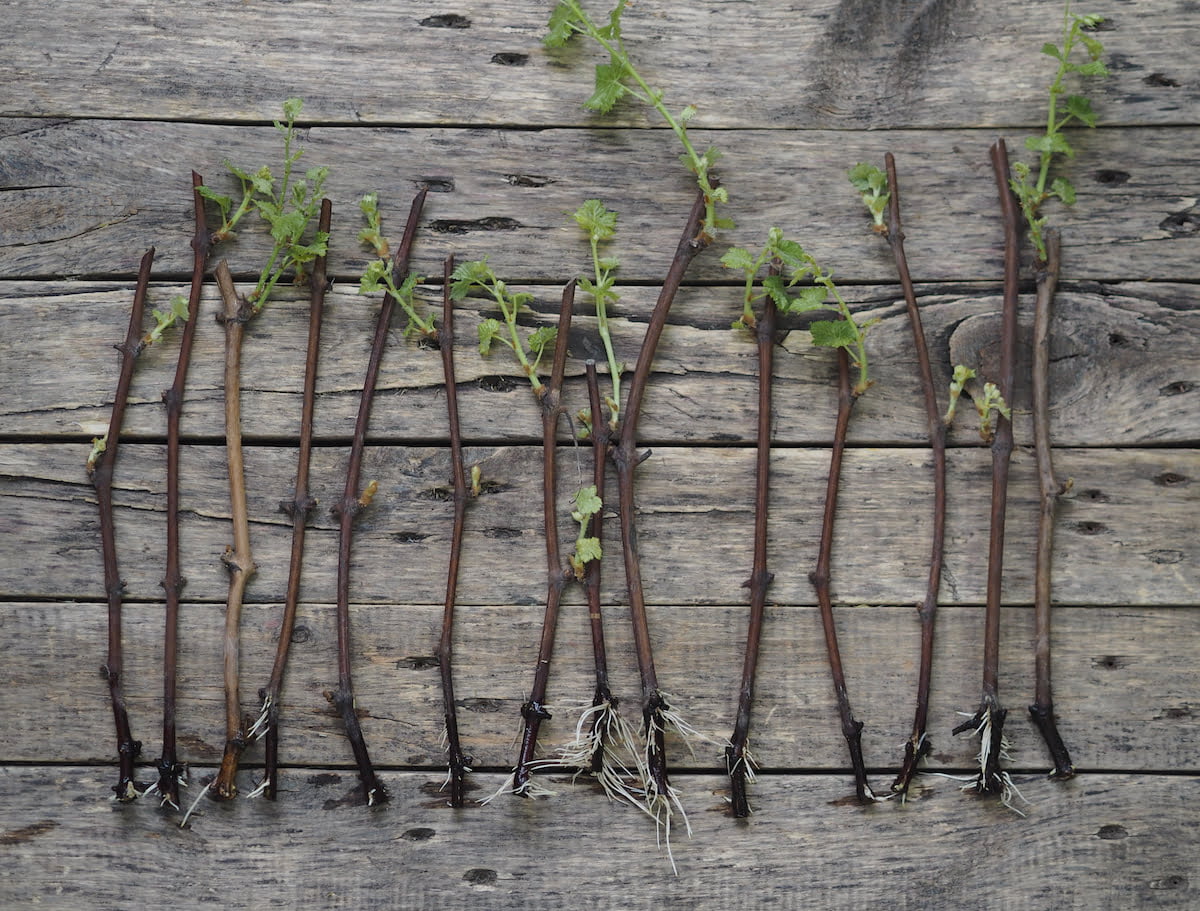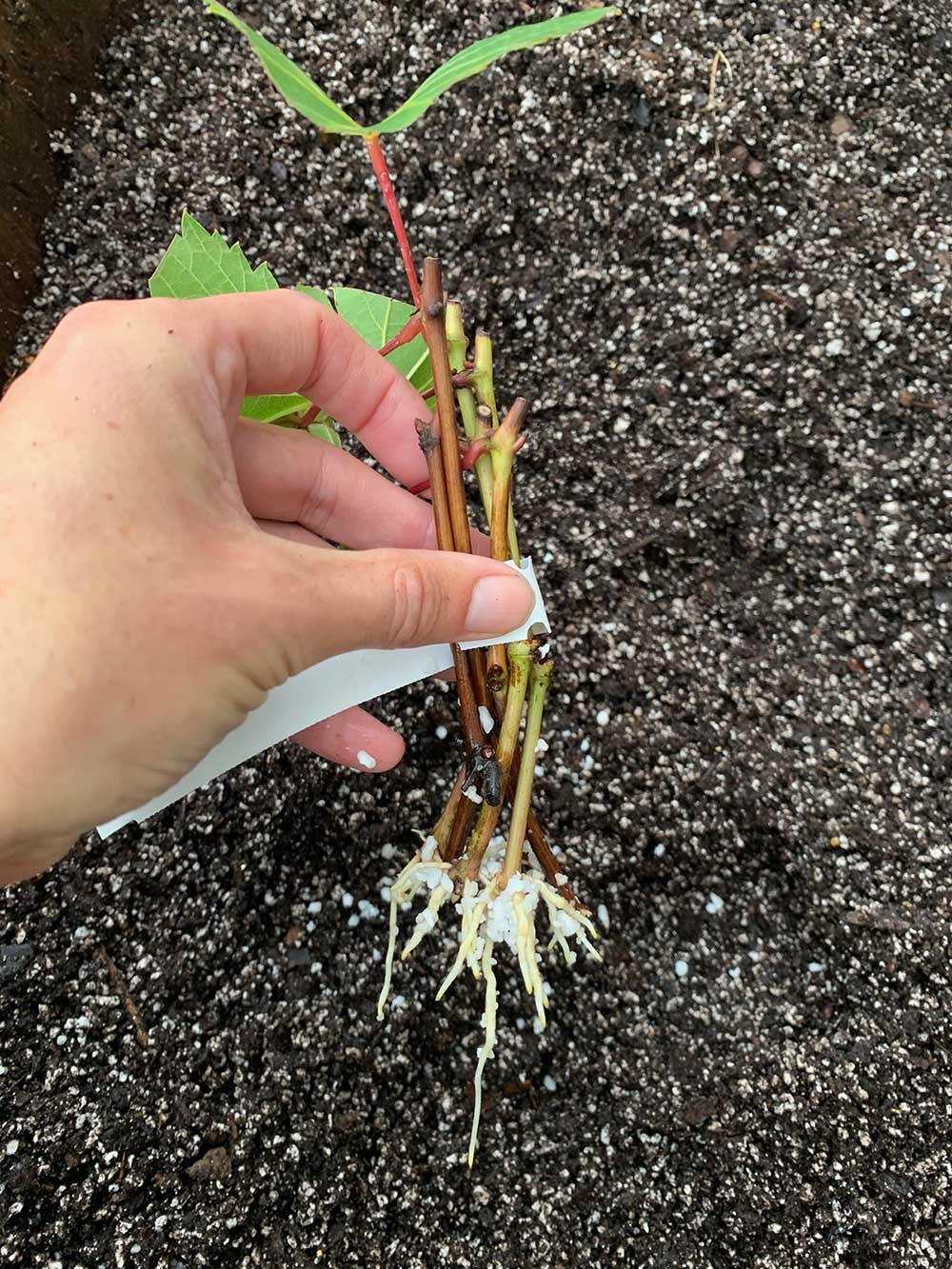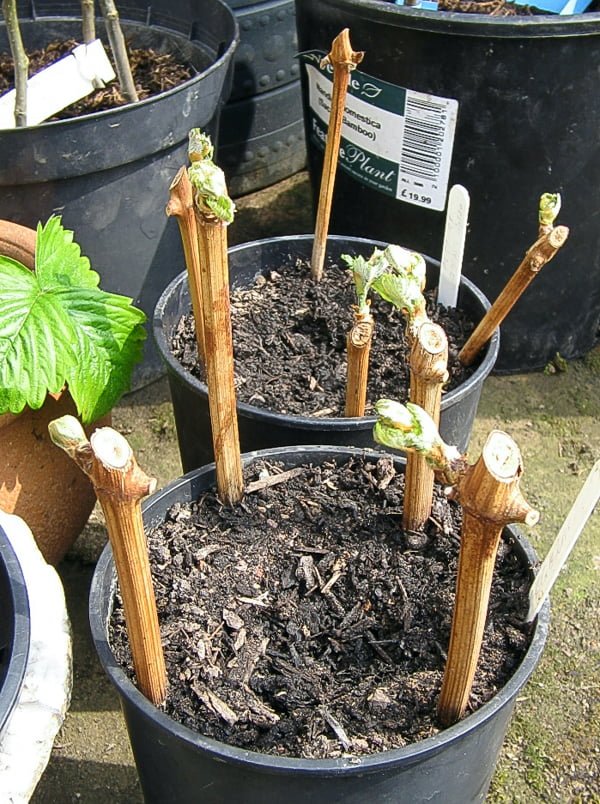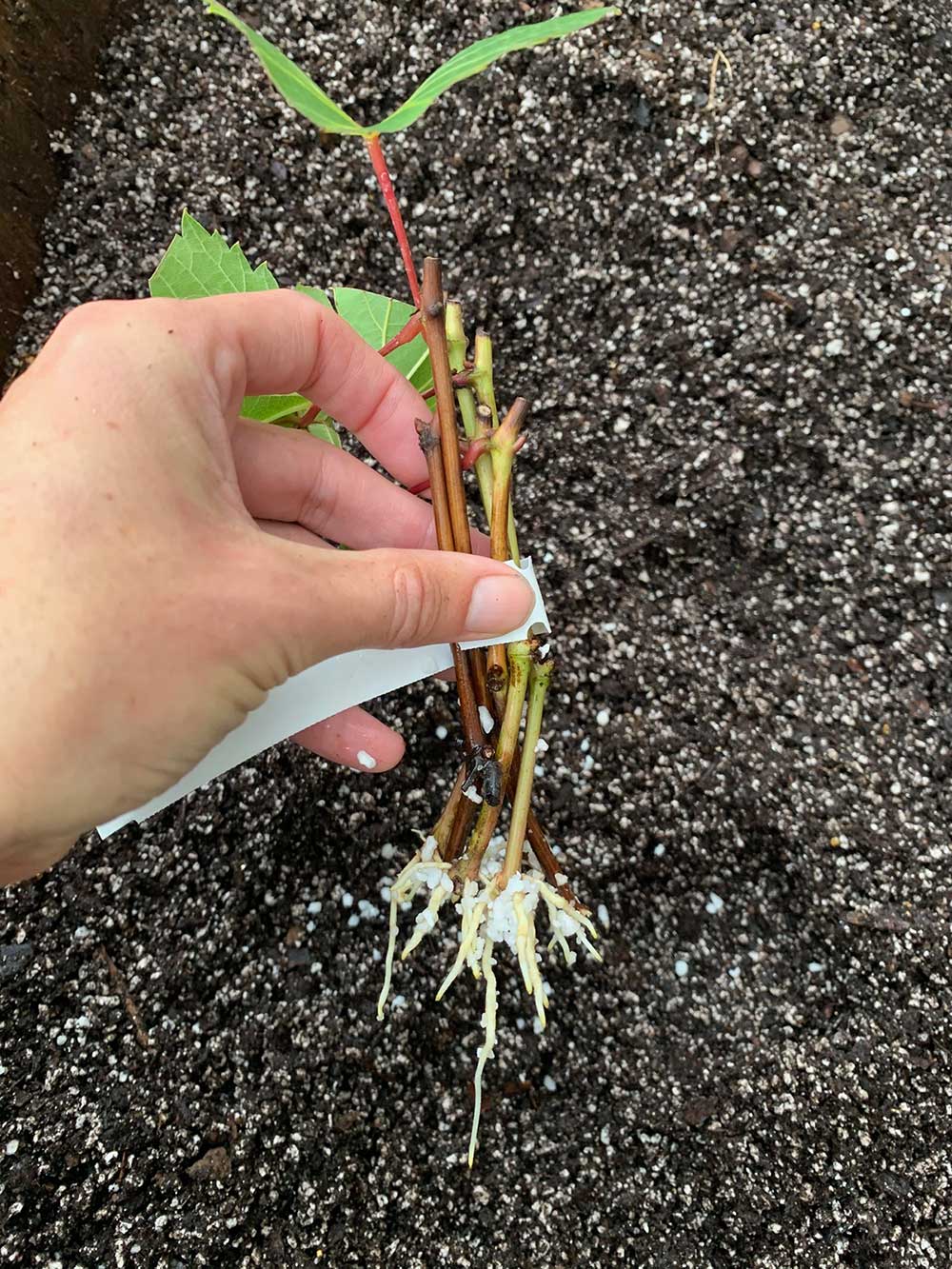In this informative article, you will learn the steps and techniques to effectively propagate grapes. Whether you are a vineyard owner or a home gardener looking to expand your grape crop, understanding the process of grape propagation is crucial to ensure successful cultivation and growth. From selecting the right plant material to implementing the correct propagation methods, this article will provide you with valuable insights and practical tips on how to propagate grapes effectively and efficiently.

Choosing the Right Grape Variety
When it comes to growing grapes, it is crucial to choose the right grape variety that suits your climate and soil conditions. Different grape varieties thrive in different climates, so it is essential to consider these factors before making your selection.
Consider climate and soil conditions
Grapes are sensitive to climate and soil conditions, so it is important to understand these factors when choosing a grape variety. Some grape varieties prefer hot and dry climates, while others thrive in cooler regions. Similarly, certain grape varieties prefer well-draining soil, whereas others can tolerate heavy and clay-like soil.
To determine the suitability of a grape variety for your climate, consider the average temperatures and rainfall in your area. Research different grape varieties and their climatic requirements to find the best fit. Additionally, test your soil to identify its composition and make sure it is suitable for grape cultivation.
Identify your purpose for growing grapes
Another important factor to consider when choosing a grape variety is the purpose for which you plan to grow grapes. Different grape varieties are suited for specific purposes, such as wine production, fresh consumption, or making raisins.
If your goal is to make wine, consider grape varieties that are known for producing excellent wine. If you want to grow grapes for fresh consumption, select sweet and flavorful varieties. On the other hand, if you plan to make raisins, opt for grape varieties that have a high sugar content and thicker skins.
Identifying your purpose for growing grapes will allow you to choose a variety that meets your specific needs and preferences.
Selecting Healthy Plant Material
Once you have chosen the grape variety you desire, it is crucial to select healthy plant material to ensure a successful crop. Healthy plants not only have a better chance of survival but also produce higher-quality grapes.
Purchase certified disease-free plants
When purchasing grape plants, it is highly recommended to buy certified disease-free plants from a reputable nursery. Disease-free plants significantly reduce the risk of pests and diseases that can harm your grapes. It is also advisable to source your plants from a nursery that specializes in grapevines as they are more likely to offer healthy and disease-free specimens.
Inspect the plants for signs of pests or diseases before purchasing. Look for any abnormalities, such as yellowing leaves or spots on the foliage. Avoid plants with obvious signs of pests or diseases as they can negatively affect the health of your entire vineyard.
Opt for dormant plants for better success
Planting dormant grape plants is generally more successful than planting active, growing plants. Dormant plants have the advantage of being less vulnerable to transplant shock and have a higher chance of establishing themselves successfully.
When purchasing grape plants, choose those that are in a dormant state. Dormant plants typically have bare roots and lack leaves or active growth. These plants are easier to handle during transplanting and have a higher chance of survival.

Preparing the Soil
Proper soil preparation is vital for the healthy growth of grapevines. By preparing the soil appropriately, you provide a suitable environment for the roots to penetrate, access nutrients, and ensure good drainage.
Test the soil pH and make necessary amendments
Before planting your grapevines, it is essential to test the soil pH and make any necessary amendments. Most grape varieties prefer a slightly acidic to neutral soil pH in the range of 6.0 to 7.0. Testing the soil pH will help you determine if any adjustments are required to create the optimal growing conditions for your grapevines.
If the soil pH is too high or too low, you can make amendments by adding lime to raise the pH or elemental sulfur to lower it. Follow the recommendations provided by a soil test report to adjust the pH to the desired range.
Ensure good drainage
Grapevines thrive in well-drained soil, so it is crucial to ensure good drainage in your vineyard. Poor drainage can lead to waterlogged soil, which can cause root rot and other fungal diseases.
To improve drainage, amend the soil with organic matter such as compost or aged manure. This will help improve the soil structure and enhance water infiltration and percolation. Additionally, consider planting grapes on a slope or using raised beds to further improve drainage.
Remove weeds and grass
Before planting your grapevines, it is important to eliminate weeds and grass from the planting area. Weeds and grass compete with grapevines for nutrients and water, inhibiting their growth and productivity.
To remove weeds and grass, manually pull them out or use a garden hoe or tiller to till the soil. This process will help disrupt the weed and grass roots and prevent their regrowth. Ensure that the planting area remains weed-free throughout the growing season by regularly removing any emerging weeds.
Till the soil to a depth of at least 12 inches
Tilling the soil is an important step in preparing the soil for grape cultivation. It helps loosen compacted soil, improve aeration, and promote root penetration.
Before planting, use a garden tiller or a shovel to till the soil to a depth of at least 12 inches. This will help break up any compacted layers and promote the growth of healthy roots. Removing large stones and debris during tilling will also create a more favorable environment for grapevines.
Creating Support Structures
Grapevines require support structures to ensure they grow in an organized manner and receive adequate sunlight and airflow. Choosing the right support structure is essential for the successful cultivation of grapes.
Choose between trellises, arbors, or fences
There are various types of support structures to choose from when it comes to growing grapes. Trellises, arbors, and fences are popular options for supporting grapevines.
Trellises consist of vertical posts and horizontal wires or bars that allow the grapevines to grow upward. Arbors provide a shaded walkway with grapevines trained over the top. Fences can also be used to support grapevines, with the vines growing along the fence line.
Consider your space, aesthetic preferences, and the needs of your grape variety when choosing the support structure. Ensure that the support structure is sturdy enough to withstand the weight of the vines and is durable enough to last for many years.
Ensure the support structure is sturdy and durable
The longevity and functionality of the support structure are crucial for the successful growth of grapevines. Make sure to select a support structure that is sturdy and durable enough to support the weight of the grapevines throughout their lifespan.
Choose materials that are resistant to decay and can withstand exposure to the elements. Common materials used for support structures include treated lumber, metal posts, and wire cables. Ensure that the materials are securely anchored and properly installed to prevent any structural failures.
Install support before planting the grapevine
To avoid disturbing the roots of the grapevines later on, it is important to install the support structure before planting. This will allow you to train the newly planted grapevines onto the support system immediately. Installing the support structure beforehand also ensures that it is properly positioned and ready to provide the necessary support once the vines start growing.

Pruning Techniques
Pruning is a vital practice in grape cultivation that helps maintain the health and productivity of the vine. Proper pruning techniques ensure that the grapevine develops a balanced structure, improves sunlight penetration, and enhances air circulation.
Learn about different pruning methods (cane, spur, or double Guyot)
There are several pruning methods used in grape cultivation, including cane pruning, spur pruning, and double Guyot pruning. Each method has its advantages and is suitable for different grape varieties and growing conditions.
Cane pruning involves selecting one or two canes from the previous year’s growth and removing the rest. Spur pruning, on the other hand, involves selecting a few short spurs and removing most of the previous year’s growth. Double Guyot pruning combines elements of both cane and spur pruning, with two long canes and a spur retained.
Educate yourself about the various pruning methods and consult resources specific to your grape variety to determine the best pruning technique to use.
Select the appropriate pruning time based on grape variety
The timing of pruning is crucial for the successful growth of grapevines. The ideal pruning time varies depending on the grape variety, climate, and desired results.
As a general rule, most grapevines are pruned during their dormant period, which typically occurs in late winter or early spring. Pruning during this time helps stimulate new growth and restricts excessive vine vigor. However, some grape varieties may require pruning at different times, such as immediately after harvest or in late summer.
Research the specific pruning requirements of your grape variety to ensure you prune at the appropriate time.
Remove dead or damaged wood
During the pruning process, it is important to identify and remove any dead or damaged wood. Dead wood is not productive and can harbor pests and diseases. Removing dead wood allows for better airflow and reduces the risk of infection.
Inspect the grapevine carefully and prune off any wood that appears dead or shows signs of disease or damage. Make clean cuts just above a healthy bud or lateral branch.
Prune for desired shape and structure
Pruning also allows you to shape and train the grapevine according to your desired structure. Whether you prefer a single trunk with lateral branches or a more complex system, pruning can help you achieve your desired shape.
Consider the space available, the growth habit of the grape variety, and your specific goals when pruning for shape and structure. Regular pruning throughout the growing season will help maintain the desired form and promote optimal grape production.
Planting Grapes
Once you have prepared the soil, selected the grape variety, and established the support structure, it is time to plant the grapevines. Proper planting techniques ensure that the vines establish themselves well and have a strong foundation for future growth.
Dig a hole twice the size of the root ball
When planting grapevines, dig a hole that is about twice the size of the root ball. This will provide enough space for the roots to spread and establish themselves. Loosen the soil in the planting hole to ensure good root penetration.
Place the vines in the hole and backfill with soil
Carefully place the grapevines in the planting hole, making sure the roots are spread out and not cramped. Hold the vine upright while filling the hole with soil, ensuring that the crown is level with the soil surface.
Backfill the hole in layers, gently firming the soil around the roots as you go. Avoid compacting the soil too tightly, as this can hinder water infiltration and root growth.
Spread the roots and firm the soil gently
When planting grapevines, it is important to spread the roots in a natural and outward direction. This encourages the roots to grow outwards and establish a strong root system.
After backfilling the hole, gently firm the soil around the root ball to eliminate air pockets. This will ensure good soil-to-root contact and promote root growth. However, be careful not to compact the soil too tightly, as this can hinder water and air movement in the soil.
Water thoroughly after planting
Immediately after planting, water the grapevines thoroughly. Proper watering at the time of planting helps settle the soil, ensures good root-to-soil contact, and reduces transplant shock.
Provide enough water to thoroughly saturate the soil in the planting hole and the surrounding area. This will help the roots access moisture and nutrients and promote establishment.

Providing Adequate Watering
Water is an essential component for the healthy growth and development of grapevines. Proper watering practices throughout the growing season are crucial for optimizing grape production and maintaining plant health.
Water newly planted vines regularly
Newly planted grapevines require regular watering to establish themselves and develop a strong root system. Water the grapevines immediately after planting and continue to provide regular irrigation for the first few weeks.
Check the soil moisture regularly and water whenever it starts to feel dry. Keep in mind that newly planted vines have smaller root systems and may require more frequent watering than established grapevines.
Maintain a consistent watering schedule during the growing season
During the growing season, it is important to maintain a consistent watering schedule to ensure optimal grape production. Monitor the soil moisture regularly and water when necessary, especially during dry spells or hot weather.
Provide deep, thorough watering rather than frequent shallow watering. This encourages the roots to grow deeper in search of moisture and promotes a stronger, more resilient root system.
Avoid excessive irrigation to prevent root rot
While it is important to provide adequate water, it is equally important to avoid excessive irrigation. Overwatering can lead to root rot and other fungal diseases that can severely impact the health of the grapevines.
To prevent excessive irrigation, ensure that the soil has good drainage and does not become waterlogged. Avoid overwatering during periods of cool or rainy weather when the soil is already moist.
Fertilizing Requirements
Grapes, like any other plant, require essential nutrients for healthy growth and maximum productivity. Understanding the fertilizing requirements of grapevines and providing the necessary nutrients is crucial for successful grape cultivation.
Apply a balanced fertilizer during the dormant season
Applying a balanced fertilizer during the dormant season provides grapevines with the necessary nutrients to support growth and development. A balanced fertilizer typically contains equal or near-equal proportions of nitrogen, phosphorus, and potassium.
Spread the fertilizer evenly around the base of the grapevines, keeping it a few inches away from the trunk. Follow the recommended application rates provided on the fertilizer packaging or based on a soil test report.
Avoid over-fertilization, which can lead to excessive vine growth
While fertilization is important for grapevines, excessive fertilizer application can result in excessive vegetative growth and reduced fruit production. Over-fertilization can also lead to imbalances in nutrient levels and may negatively impact the overall health of the grapevines.
Follow the recommended application rates for fertilizers and avoid applying more than necessary. Regularly monitor the growth of the grapevines and adjust the fertilization program accordingly.
Monitor soil nutrient levels and adjust fertilizer accordingly
Regularly monitoring the nutrient levels in the soil is crucial for maintaining a balanced and healthy vineyard. Performing soil tests at regular intervals allows you to evaluate the nutrient status of the soil and make adjustments to the fertilization program if necessary.
Soil tests provide valuable information on nutrient levels, pH, and other soil properties. Based on the soil test results, you can determine if any specific nutrients are deficient and apply targeted fertilizers or amendments to address the deficiencies.

Controlling Pests and Diseases
Pests and diseases can pose significant threats to grapevines and can impact the quality and quantity of the grapes produced. Implementing effective pest and disease control measures is essential for protecting your grapevines and ensuring a successful harvest.
Identify common grape pests like aphids, mites, and beetles
Grapes are susceptible to various pests, including aphids, mites, beetles, and other insects. These pests can cause damage to the foliage, stems, and fruits, leading to reduced grape quality and yield.
Educate yourself about the common grape pests that are prevalent in your region. Learn to recognize the signs of infestation, such as distorted leaves, sticky residue, or visible insects. Regularly inspect your grapevines and take the necessary measures to control pests before they become a significant problem.
Implement appropriate pest control measures
Controlling pests in a vineyard requires an integrated pest management (IPM) approach that combines preventive measures, monitoring, and targeted pest control measures.
Implement preventive measures, such as maintaining good sanitation practices, removing diseased plant material, and promoting biodiversity in the vineyard. Monitor pest populations regularly, using traps or visual inspections, and take appropriate action when necessary.
Consider using organic pest control methods whenever possible, such as introducing beneficial insects or using insecticidal soaps or oils. If chemical treatments are necessary, follow the recommended application rates and safety guidelines to minimize their impact on the environment and beneficial insects.
Recognize signs of diseases such as powdery mildew or black rot
Grapevines are susceptible to various diseases, including powdery mildew, black rot, downy mildew, and botrytis bunch rot. These diseases can significantly affect grape quality and yield if left untreated.
Learn to recognize the signs of common grape diseases, such as fuzzy white patches on leaves or fruit, brown spots on leaves, or shriveled berries. Regularly inspect your grapevines for any signs of disease and take appropriate action to prevent their spread.
Use organic or chemical treatments to manage diseases
Managing grape diseases often requires a combination of preventive measures, cultural practices, and targeted treatments. Organic and chemical treatments can be used to manage grape diseases effectively.
Implement cultural practices such as pruning for good air circulation, removing infected plant material, and promoting proper vineyard hygiene to reduce disease incidence. Consider using organic fungicides or biological agents that are effective against specific grape diseases.
If chemical treatments are necessary, familiarize yourself with suitable fungicides and follow the recommended application rates and safety precautions. Remember to consider the potential impact on the environment, beneficial insects, and human health when selecting and applying chemical treatments.
Harvesting Time and Techniques
Knowing when and how to harvest grapes is crucial for achieving optimal ripeness and flavor. Proper harvesting techniques ensure that the grapes are picked at the right time and handled carefully to preserve their quality.
Observe color and taste indicators for ripeness
Before harvesting, it is important to observe color and taste indicators to determine the ripeness of the grapes. Different grape varieties have specific color changes as they ripen, ranging from green to various shades of red, purple, or gold.
Additionally, taste tests can help determine if the grapes have reached their desired sweetness and flavor profile. Sample grapes from multiple areas of the vineyard and taste them to assess their ripeness.
Pick the grapes in the early morning when they are cool
To preserve the freshness and quality of the grapes, it is ideal to harvest them in the early morning when the temperatures are cool. Cool temperatures reduce the risk of spoilage during harvest and help maintain the flavor and aroma of the grapes.
Harvesting in the early morning also ensures that the grapes are not exposed to direct sunlight, which can cause heat damage and affect their quality.
Handle the grapes gently to avoid bruising
During harvest, it is important to handle the grapes gently to avoid bruising and damage. Grapes are delicate and can easily be crushed or bruised if mishandled.
When picking the grapes, use a gentle twisting motion to detach them from the vine. Place the harvested grapes into shallow containers to avoid excessive weight and pressure on the fruit. Avoid tightly packing the grapes to prevent crushing and bruising during transportation.
Store grapes in a cool, humid place for short-term storage
If you are not planning to use or process the grapes immediately after harvest, it is important to store them properly to maintain their quality. Grapes can be stored for a short period of time under specific conditions.
Store the harvested grapes in a cool location with a temperature of around 30-32°F (-1 to 0°C) and a relative humidity of around 85-90%. This will help prevent the grapes from drying out and maintain their freshness. Store the grapes in well-ventilated containers to allow for proper air circulation.
Remember that grapes are highly perishable, and long-term storage is not recommended. Use or process the grapes as soon as possible to enjoy their optimal flavor and quality.
In conclusion, successfully growing grapes requires careful consideration of various factors, from selecting the right grape variety to ensuring proper soil preparation and implementing effective pruning, watering, fertilizing, pest, and disease control practices. By following these comprehensive guidelines, you can increase your chances of cultivating healthy grapevines that produce abundant and high-quality fruit.



